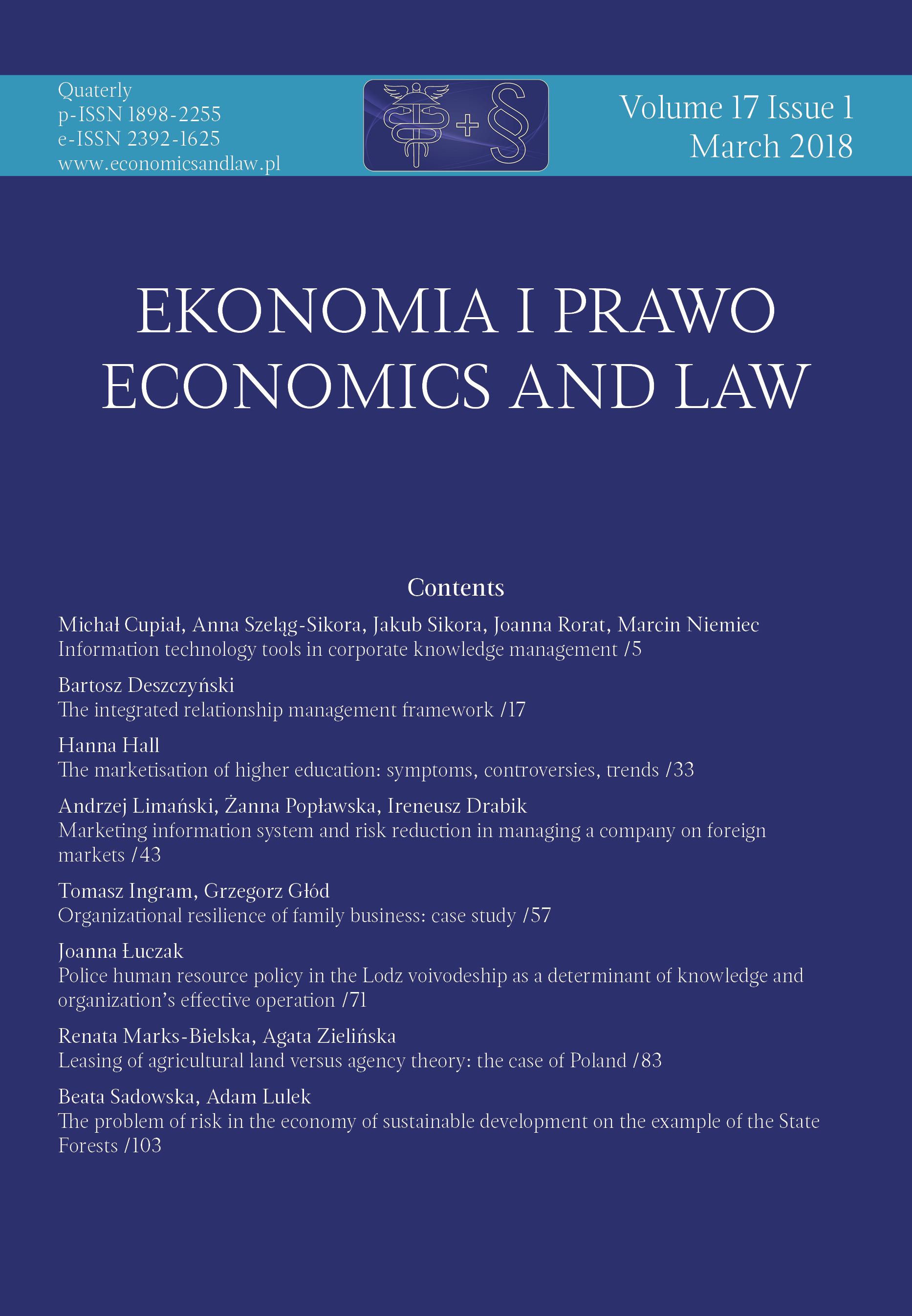Leasing of agricultural land versus agency theory: the case of Poland
Leasing of agricultural land versus agency theory: the case of Poland
Author(s): Renata Marks-Bielska, Agata ZielińskaSubject(s): Economy, Agriculture
Published by: Wydawnictwo Naukowe Uniwersytetu Mikołaja Kopernika
Keywords: agriculture lease; agency theory; contract
Summary/Abstract: Motivation: Agency theory examines relations between entities as contract relations, like land owner and tenant. Polish farmland market and its ‘rules of the game’ are still changing after political transformation. Decisions and actions presented by both parts of the lease contract seems to be easier to understand, explain and predict with the research instru-mentality of new institutional economy, especially agency theory. Agency relationship is the issue studied by the economists many times, but there is a need to complete it with exam-ples, researches and practical implications. Aim: the determination of the significance of the lease in Polish agriculture with the use of agency theory. Results: Use of the analytical apparatus of agency theory allowed for the indication of critical elements in the lessee/ lessor relation. One of the most important elements of contract specification is the remu-neration transferred as part of the relation. Payments in the market of leasing deriving from the Agricultural Property Agency are regulated by the institution of the lease fee. On the other hand, in the case of leases between neighbours, there are both financial instruments (e.g. settlement of tax, resignation from land subsidies for the benefit of the land owner, rent) and non-financial ones (e.g. equivalent in agricultural products, services performed with mechanical equipment, household care). The results of the study have shown that financial forms are the most popular form of payment; most indications referred to resigna-tion from land subsidies (59.6%).
Journal: Ekonomia i Prawo. Economics and Law
- Issue Year: 17/2018
- Issue No: 1
- Page Range: 83-102
- Page Count: 20
- Language: English

